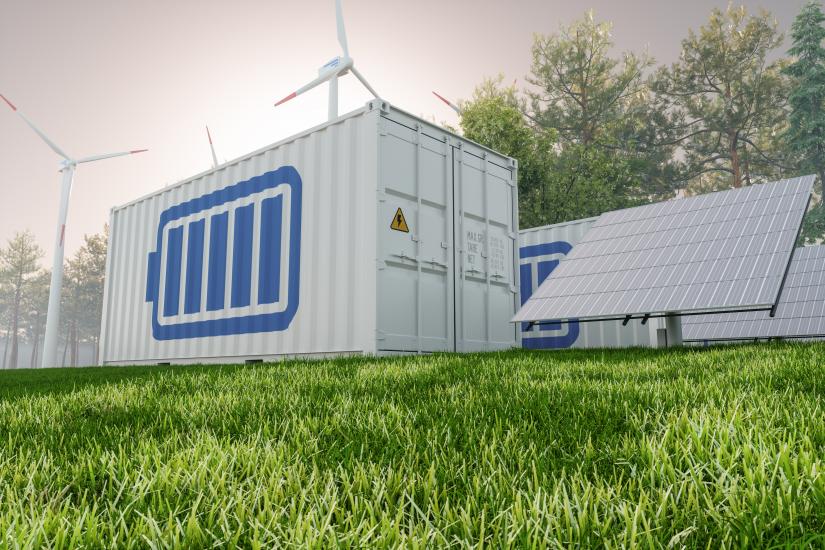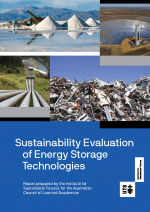Australia is undergoing an energy transformation that promises to intensify over the coming decades. In the electricity generation sector this transformation involves a greater reliance on renewable energy in response to climate mitigation policies, relocation of where energy is generated and distributed as a result of changing economics of energy costs and technological developments, and shifts in how and when energy is consumed with the advent of ‘prosumers'.
Energy storage is critical to a successful transformation as it provides the vital link between energy production and consumption, and allows for greater penetration of both utility scale variable renewable generation and distributed energy generation. Without effective planning, appropriate investment and also incentives to develop and deploy energy storage technologies, the costs of electricity in Australia will continue to increase and there will be less reliable (adequate and secure) electricity supply.
ISF participated in a co-funded project with the Australian Council of Learned Academies (ACOLA) and Australia’s Chief Scientist, considering the transformative role energy storage could play in our energy systems. Read the synthesis report from ACOLA here.
ISF's participation consists of two research projects:
- a multiple-scenario approach to model the potential requirement for uptake of energy storage to ensure Australia’s energy security, and
- an evaluation of the cradle-to-grave environmental and safety benefits and risks presented by uptake of energy storage.
Modelling of energy storage solutions for Australia
Energy storage is an emerging industry globally and the application of storage in high volumes for both the stationary and transport sectors is still immature. Storage comes in many forms and can be applied in many scenarios, including community based grid storage, behind the meter individual consumer storage, electrified transport systems, new defence requirements and many other energy scenarios.
While acknowledging these diverse applications for energy storage, the first report primarily considers the transformative role that energy storage can play in Australia’s electricity systems.
It identifies future economic opportunities and challenges, and describes the current state of and future trends in energy storage technologies. It also examines the scientific, technological, economic and social economy aspects of the role that energy storage can play in Australia’s transition to a low-carbon economy by 2030, and beyond to a low-carbon economy.
The report finds that energy storage is both a technically feasible and an economically viable approach to responding to Australia’s energy security and reliability needs to 2030, even with a high renewables generation scenario. However, there will need to be suitable planning and policies, and financial incentives, for either states or the private sector to build the appropriate level of storage. Achieving the right balance between technology neutrality and making strategic choices is essential to achieving resilient and cost-effective outcomes.
Environmental benefits and risks from energy storage uptake
The second report identifies significant energy storage technology opportunities for Australia across global supply chains.
Australia has world-class resources of raw materials used in battery manufacturing, most notably lithium. Our raw materials, together with our world-class expertise in the development of energy storage solutions, including batteries, the design of software and hardware to optimise integration in smart energy systems, and expertise in the design and deployment of systems for off-grid energy supply and micro-grids, demonstrate that Australia has the potential to become a world leader.
While the possibility of Australia becoming a manufacturer of existing battery technologies is highly unlikely, there is opportunity for manufacturing of next generation battery technologies. This is particularly true in niche markets such as situations where safety is paramount, defence applications, and for Australia’s high ambient temperature conditions. Given that current lithium-ion technology was not designed for stationary storage or electric vehicles, but for portable electronics, then an Australian technology that is purposed for a specific application (e.g. hot conditions or defence applications) could underpin the establishment and growth of a local manufacturing capability.
The impact and risks of the various energy storage technologies vary. Pumped hydro was found to be a low risk, low impact technology. Despite the geographic limitations for pumped hydro, and the time required to implement new facilities, it is a technology that offers much potential for deployment in the grid.
While lithium-ion technology is the battery technology of choice for most energy storage applications, it comes with risks and impacts. For example, existing technologies rely on materials that have human rights impacts (for example mining of cobalt in the Democratic Republic of Congo) and availability of lithium resources. However, there is a potential opportunity for Australia, which has considerable lithium resources and where technologies for benefaction of lithium ores are being developed.
Recycling is identified as an opportunity for Australia, with a history of recycling more than 90 per cent of lead-acid batteries. Opportunities to develop technologies to recycle components of lithium batteries (including cobalt, nickel and lithium) could be further encouraged and supported.
Importantly, Australia has an opportunity to encourage product stewardship across the whole life cycle, including responsible sourcing of materials, development of mining standards and sustainability codes, and disposal.
RESEARCH OUTPUTS
Storage Requirements for Reliable Electricity in Australia (2017) (Executive summary)
Storage Requirements for Reliable Electricity in Australia (2017) (Report)
Sustainability Evaluation of Energy Storage Technologies (2017) (Executive summary)
Sustainability Evaluation of Energy Storage Technologies (2017) (Report)
-
Adjunct Fellow
-
Research Director
-
Associate Professor and Research Director
-
Tom Morris
-
Research Director
Year
- 2017
Funded by
- Australian Council of Learned Academies (ACOLA)
- Australia’s Chief Scientist









